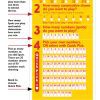Welcome to the exciting world of poker! Have you ever wondered how to play Omaha Hi Low Poker Video? Well, you’re in luck, because in this guide, we’re going to break it down for you, step by step. So grab your chips, shuffle the deck, and let’s dive into the thrilling game of Omaha Hi Low Poker Video!
If you’re looking for a new poker variation that offers both high and low hand options, then Omaha Hi Low Poker Video is a must try. Combining elements of Texas Hold’em and Omaha Poker, this game adds an exciting twist to the traditional rules. Whether you’re a beginner or an experienced player, we’ve got you covered with all the tips and strategies you need to dominate the virtual poker table.
In this guide, we’ll explain the rules of Omaha Hi Low Poker Video, discuss the different hand rankings, and provide valuable insights on how to develop a winning strategy. So, if you’re ready to take your poker skills to the next level, let’s dive in and learn how to play Omaha Hi Low Poker Video like a pro!
- Start by understanding the rules of Omaha Hi Low Poker.
- Watch a video tutorial to grasp the gameplay and strategies.
- Familiarize yourself with hand rankings in Omaha Hi Low Poker.
- Practice playing the game with friends or online to gain experience.
- Always stay updated on new strategies and variations in the game.
Playing Omaha Hi Low Poker is exciting and offers a unique twist to traditional poker. By following these steps and watching a video tutorial, you’ll learn the ins and outs of the game and be ready to join the action!

How to Play Omaha Hi Low Poker Video: Mastering the Game
Welcome to the world of Omaha Hi Low Poker Video! Whether you’re a seasoned poker player or a complete beginner, this game offers an exciting twist to traditional poker. In this comprehensive guide, we will take you through the rules, strategies, and tips to help you become a skilled Omaha Hi Low player. Get ready to dive into the intricacies of the game and discover all the strategies and techniques that will take your poker skills to the next level.
The Basics of Omaha Hi Low: Understanding the Rules
Before we get into the nitty-gritty of Omaha Hi Low poker video, it’s essential to understand the basic rules of the game. Omaha Hi Low is a variation of Omaha poker that follows similar gameplay but with a unique twist. The goal of the game is to make the best possible hand using a combination of four hole cards and five community cards. The twist lies in the fact that the pot is split between the best high hand and the best low hand, hence the name “Hi Low.”
To start the game, each player is dealt four private hole cards, followed by a round of betting. The dealer then reveals the flop, which consists of three community cards, followed by another round of betting. Next, the turn card is revealed, and another round of betting takes place. Finally, the river card is revealed, and a final round of betting occurs. The player with the best high hand and the player with the best low hand split the pot between them, with the possibility of one player winning both halves.
1. Understanding Hand Rankings and Variations
In Omaha Hi Low, hand rankings follow the traditional poker hierarchy. The highest-ranking hand is the Royal Flush, consisting of the Ace, King, Queen, Jack, and Ten of the same suit. It is followed by a Straight Flush, Four of a Kind, Full House, and other combinations. However, in the Hi Low variation, the pot is divided between the best high hand and the best low hand. The low hand must meet certain requirements, such as not having any card higher than 8 and forming a combination of five cards that are 8 or lower.
It is crucial to understand the different possibilities for hand combinations and how they can impact your gameplay. The more you familiarize yourself with the hand rankings and variations, the better equipped you will be to make strategic decisions during the game.
One important note: the same card can be used for both the high and low hand, as long as it meets the criteria for both. This adds an extra layer of complexity and strategy to the game.
2. Developing a Solid Starting Hand Strategy
One of the keys to success in Omaha Hi Low is having a strong starting hand strategy. Since each player is dealt four private hole cards, there are more possibilities and potential combinations compared to traditional poker. It’s essential to assess the strength of your starting hand and determine its potential for both the high and low hand.
In general, starting with four cards of the same suit or in sequential order gives you a higher chance of hitting a strong hand. Additionally, starting with four low cards (8 or lower) can increase your chances of forming a winning low hand. However, it’s important not to get carried away and to consider the community cards that will be revealed throughout the game. Adjust your strategy accordingly as the game progresses.
The key to a successful starting hand strategy is to find the right balance between high hand potential, low hand potential, and the ability to adapt to the community cards. Remember, flexibility and adaptability are crucial in Omaha Hi Low.
3. Mastering Betting Strategies in Omaha Hi Low
Betting in Omaha Hi Low is an art that requires careful consideration and strategic thinking. Since the pot is split between the best high hand and the best low hand, it’s important to assess the strength of your hand relative to the potential of both components.
In the early stages of the game, it’s often wise to be more conservative with your bets. Focus on building a strong hand and gaining a better understanding of the other players’ strategies. As the community cards are revealed, reassess the strength of your hand and adjust your betting accordingly. If you have a strong chance of winning both the high and low pots, consider aggressive betting to maximize your potential winnings. However, be cautious and avoid overcommitting to the pot without a solid hand.
Remember, betting strategies can vary depending on the specific circumstances and dynamics of the game. The more experience you gain, the better equipped you’ll be at reading your opponents and making strategic decisions.
Advanced Strategies to Improve Your Omaha Hi Low Skills
Now that you have a solid grasp of the basics, it’s time to take your Omaha Hi Low skills to the next level with these advanced strategies:
1. Reading Your Opponents: The Art of Poker Tells
One of the most crucial skills in poker is the ability to read your opponents and identify their betting patterns, tendencies, and potential hand strengths. Look for subtle cues such as changes in body language, facial expressions, or betting behaviors that may give away their intentions.
Pay attention to how your opponents react to the community cards and their betting behaviors. Are they bluffing? Do they seem confident or hesitant? By analyzing these factors, you can make more informed decisions and exploit your opponents’ weaknesses.
However, be cautious not to rely solely on tells, as they are not foolproof. Use them as additional information to support your overall strategy.
2. Positional Advantage: Making the Most of Your Position at the Table
Positional advantage is a crucial concept in poker, including Omaha Hi Low. The earlier your position at the table, the less information you have about your opponents’ actions, making it harder to make informed decisions. In contrast, the later your position, the more information you have, enabling you to make more strategic plays.
Use your positional advantage wisely. When in an early position, focus on stronger starting hands to minimize risk. In a late position, take advantage of the additional information and consider bluffing or making more aggressive plays.
Remember, position matters, so adapt your strategy accordingly and take advantage of your position whenever possible.
3. Bankroll Management: Protecting Your Chips
Bankroll management is often overlooked but plays a vital role in your long-term success as a poker player. Set a budget for each session and stick to it. Avoid chasing losses or getting carried away with big wins. Consistency and discipline are key.
Additionally, consider your bankroll when making betting decisions. Avoid overcommitting to the pot if it puts your bankroll at risk. It’s better to fold and preserve your chips for another hand than risk losing it all on a weak hand.
By practicing proper bankroll management, you can minimize your losses and ensure that your poker journey is a sustainable one.
In conclusion, mastering Omaha Hi Low poker video requires a solid understanding of the rules, hand rankings, and strategic nuances of the game. By following the tips and strategies outlined in this guide, you’ll be well on your way to becoming a skilled Omaha Hi Low player. Remember, practice makes perfect, so get out there, play some hands, and refine your skills. Good luck!
Key Takeaways: How to Play Omaha Hi Low Poker Video
- Omaha Hi Low Poker is a popular variation of poker.
- The game is played with four hole cards instead of two in Texas Hold’em.
- Players must use two of their hole cards and three community cards to make the best possible hand.
- Unlike traditional Omaha, Omaha Hi Low allows for two winning hands: the highest hand and the lowest hand.
- The pot is split between the highest and lowest hands, or if one player has both, they take the entire pot.
Frequently Asked Questions
Are you curious about how to play Omaha Hi Low Poker? Look no further! We’ve got all the answers you need to get started with this exciting card game. Read on to learn more.
1. What are the basic rules of Omaha Hi Low Poker?
Omaha Hi Low Poker is played with a standard deck of 52 cards. Each player is dealt four private cards, and five community cards are placed on the table. The goal is to make the best five-card hand by combining two private cards and three community cards. The twist in this variant is that the pot is split between the player with the highest hand and the player with the lowest qualifying hand.
To form the low hand, a player must have five unpaired cards, all of which are ranked eight or lower. The best low hand is A-2-3-4-5, also known as the wheel. It’s important to note that the Ace can be used as both the highest card and the lowest card in Omaha Hi Low Poker.
2. How does the betting work in Omaha Hi Low Poker?
Omaha Hi Low Poker uses a betting structure similar to Texas Hold’em. There are four rounds of betting: pre-flop, flop, turn, and river. In the first round, each player receives their four private cards, and there is a round of betting. Then, three community cards are placed on the table (the flop), followed by another round of betting. The fourth and fifth community cards (the turn and river) are placed on the table one at a time, with a round of betting after each card.
During each betting round, players have the option to check, bet, call, raise, or fold. The betting continues until all players have either folded or put an equal amount of money into the pot. If there are two or more players remaining after the final round of betting, a showdown occurs, and the pot is split between the player with the best high hand and the player with the best low hand.
3. How is Omaha Hi Low Poker different from Omaha High Poker?
In Omaha Hi Low Poker, the pot is split between the player with the highest hand and the player with the lowest qualifying hand, whereas in Omaha High Poker, the entire pot goes to the player with the best high hand. Additionally, in Omaha Hi Low Poker, players must use exactly two private cards and three community cards to make their hand, while in Omaha High Poker, players can use any combination of their four private cards and the five community cards.
Furthermore, the low hand requirements in Omaha Hi Low Poker make the game more complex. Players must carefully consider their card combinations to ensure they have a chance at winning both the high and low halves of the pot. This adds a strategic element to the game and makes it more challenging than Omaha High Poker.
4. What are some winning strategies for Omaha Hi Low Poker?
When playing Omaha Hi Low Poker, it’s important to focus on creating a strong high hand while also aiming for a potential low hand. Look for starting hands with cards that have the potential to make strong pairs, straights, flushes, or full houses. Avoid playing hands with cards that are all high, as these will rarely qualify for the low hand portion of the pot.
Another winning strategy is to pay attention to the community cards on the table and how they may benefit your opponents. If there are three low cards on the flop, for example, it’s unlikely that someone will be able to make a qualifying low hand. This knowledge can help you make more informed decisions and adjust your strategy accordingly.
5. Are there any common mistakes to avoid in Omaha Hi Low Poker?
One common mistake in Omaha Hi Low Poker is overvaluing hands that have the potential to make a good high hand but are unlikely to make a qualifying low hand. Remember, the goal is to win both halves of the pot, so it’s crucial to consider both the high and low possibilities of your hand before investing heavily.
Another mistake is failing to pay attention to the board and the potential combinations your opponents may have. It’s important to constantly reassess your hand strength based on the community cards and the betting patterns of your opponents. Don’t get too attached to your starting hand if the board doesn’t favor it.
How to Play Omaha Hi-Lo | Beginners Guide | PokerNews
Summary
So, to sum it all up, Omaha Hi Low Poker is a fun and exciting game to play. It’s similar to Texas Hold’em, but with a twist. Instead of just one winner, there can be two, with the pot split between the best high hand and the best low hand.
To play, you need to understand the basic rules and hand rankings. You’ll also need to be strategic, knowing when to bet, raise, or fold. And don’t forget, keeping track of the community cards and your opponents’ actions is key to making smart decisions.
Remember, practice makes perfect, so keep playing and improving your skills. Whether you play with friends or online, Omaha Hi Low Poker offers a unique and challenging experience that will keep you entertained for hours.









